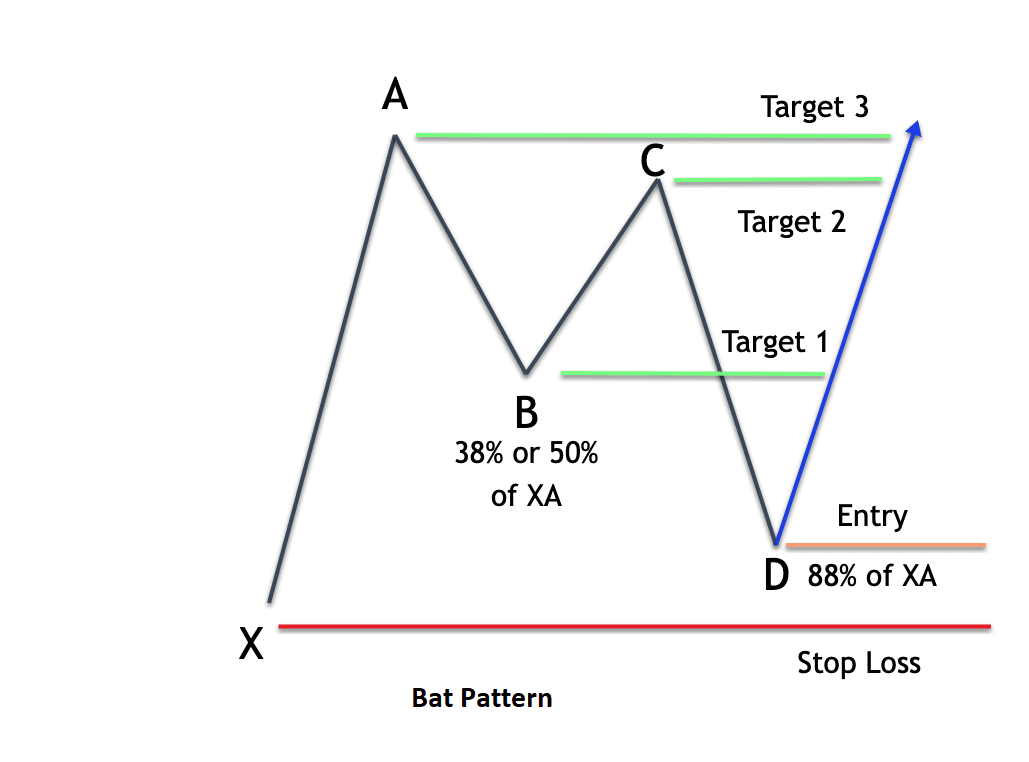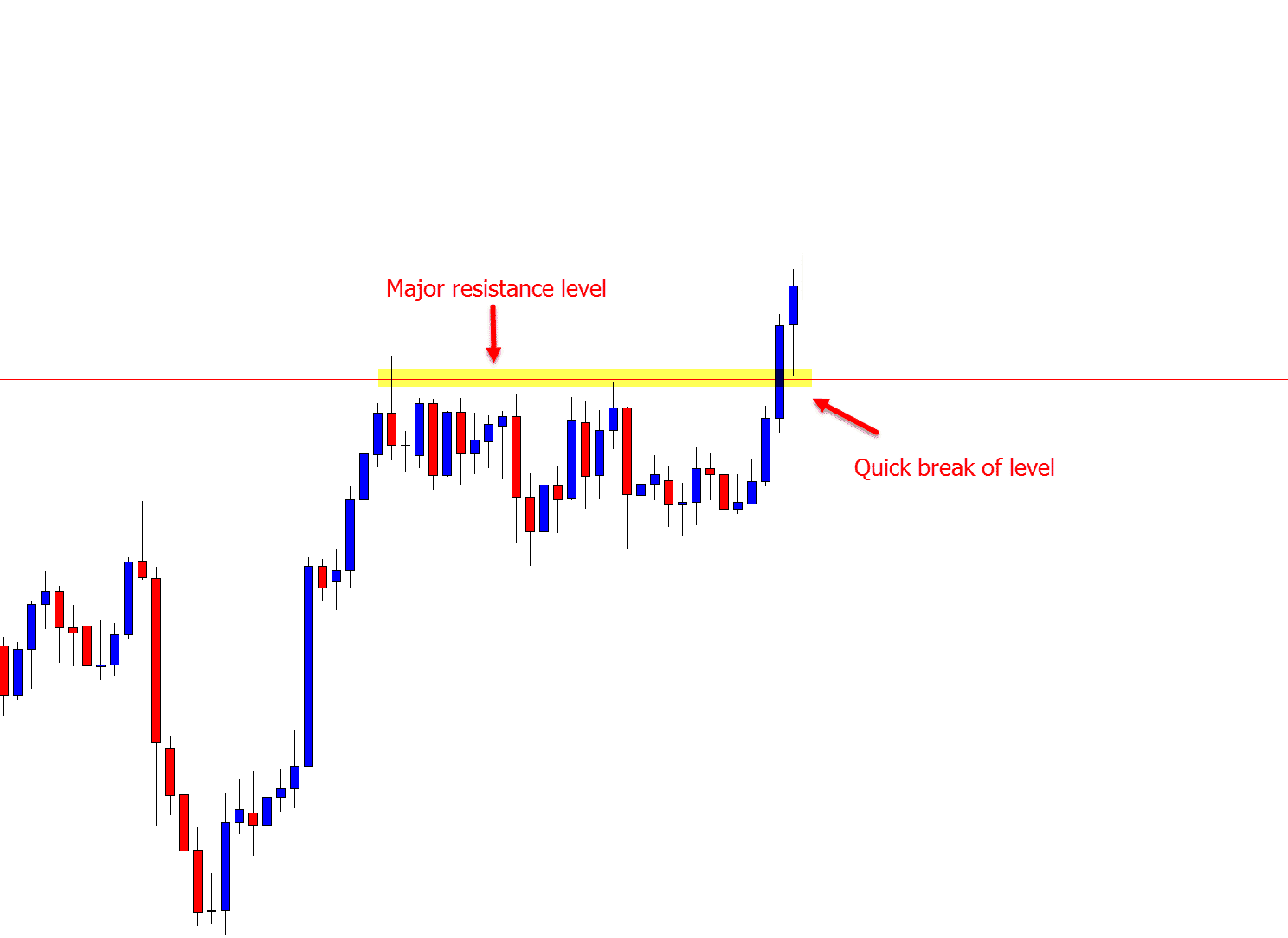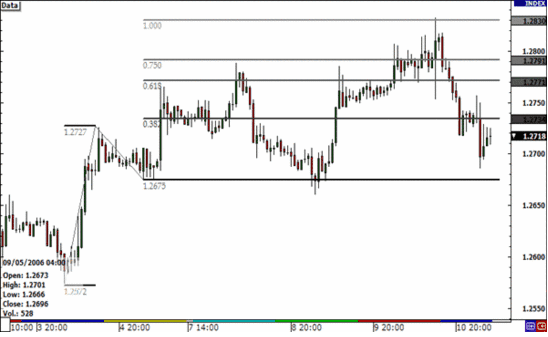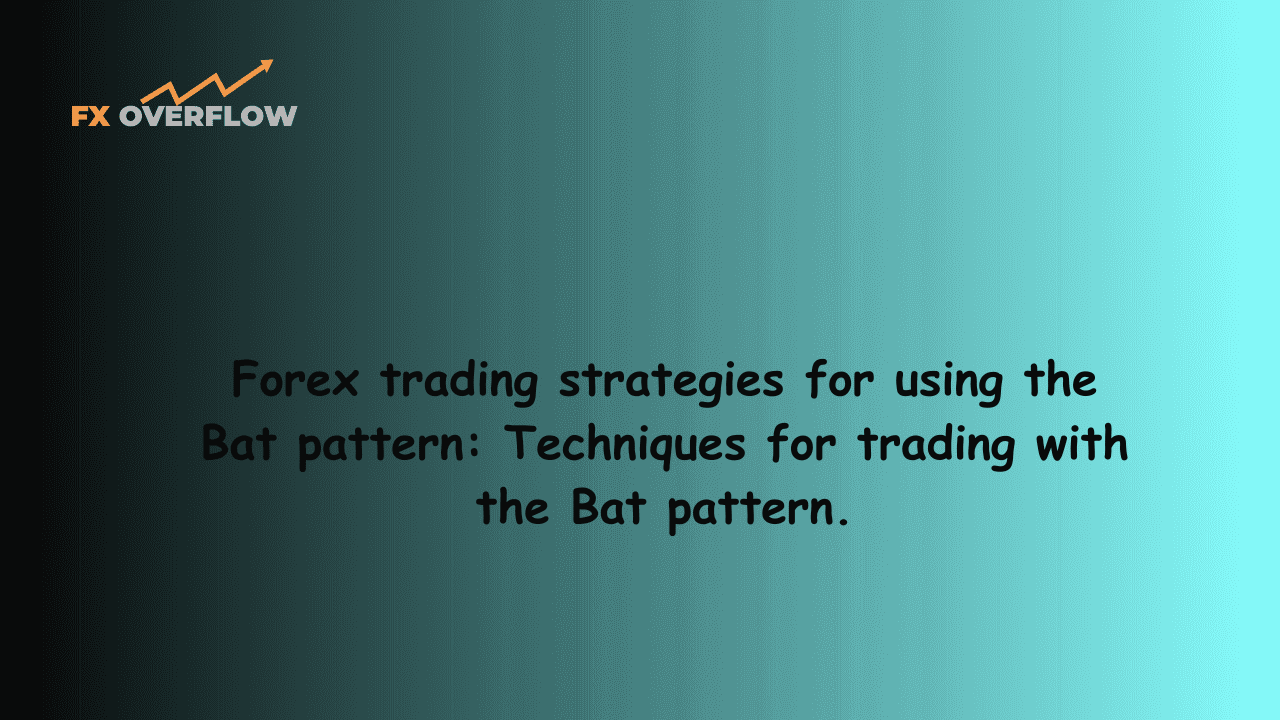Forex trading strategies for using the Bat pattern: Techniques for trading with the Bat pattern.
The world of forex trading is a dynamic landscape where traders continuously search for profitable strategies to capitalize on market movements. One such strategy that has gained popularity is trading with harmonic patterns, and specifically, the Bat pattern. Harmonic patterns are geometric price patterns that help traders identify potential trend reversals and continuation points. Among these patterns, the Bat pattern stands out for its unique structure and reliable trading opportunities. In this article, we will delve into the intricacies of the Bat pattern and explore effective trading techniques to harness its potential.
Table Content
I. Understanding the Bat Pattern
1. X to A Leg
2. A to B Leg
3. B to C Leg
4. C to D Leg
II. Trading Techniques with the Bat Pattern
1. Confirmation with Additional Indicators
2. Wait for Price Action Confirmation
3. Entry and Stop-Loss Placement
4. Target Profits with Fibonacci Extensions
III. Risk Management and Psychology
1. Position Sizing
2. Patience and Discipline
3. Adaptability
4. Continuous Learning
IV. Footnote
Understanding the Bat Pattern
The Bat pattern is classified as a harmonic pattern and is part of the broader Gartley pattern family. It was introduced by Scott Carney in his book "Harmonic Trading Vol. 1" and is recognized for its distinct Fibonacci ratios and precise price alignments. The Bat pattern is shaped by five points: X, A, B, C, and D. These points are determined using Fibonacci retracement and extension levels, offering a systematic approach to identifying potential trade setups.

1. X to A Leg: The pattern begins with the X to A leg, which represents the initial price movement that eventually leads to the formation of the pattern. Traders use Fibonacci retracement levels to identify potential reversal zones for the A point.
2. A to B Leg: The A to B leg follows the initial move and retracement. The B point should ideally retrace 38.2% to 50% of the X to A leg. This retracement sets the stage for the subsequent price action.
3. B to C Leg: The B to C leg is where the pattern starts to take shape. This leg extends beyond the X to A leg, ideally around 38.2% to 88.6% of the X to A leg. Point C acts as a critical turning point, as it helps define the potential reversal zone.
4. C to D Leg: The C to D leg is the final leg of the pattern, completing the formation. Point D is crucial, as it should ideally align with a Fibonacci extension of the X to A leg. The most common extension levels for point D are 88.6% and 161.8%.
Once these five points are identified, the Bat pattern is said to be complete, presenting traders with an opportunity to enter the market. However, successful trading with the Bat pattern requires more than just recognizing its formation; it demands a comprehensive strategy that incorporates risk management, entry, and exit techniques.
Trading Techniques with the Bat Pattern
1. Confirmation with Additional Indicators:
While the Bat pattern itself provides valuable insights, traders often combine it with other technical indicators to confirm potential trade setups. Common indicators include oscillators like the Relative Strength Index (RSI) or the Moving Average Convergence Divergence (MACD). These indicators can help verify overbought or oversold conditions, supporting the validity of the Bat pattern reversal.
2. Wait for Price Action Confirmation:
Rather than entering the trade as soon as the Bat pattern is identified, many traders wait for confirmation through price action. This involves observing how the price reacts around the potential reversal zone (point D). If there's a bullish or bearish candlestick pattern, like a bullish engulfing or a shooting star, forming around point D, it can enhance the probability of a successful trade.

3. Entry and Stop-Loss Placement:
Determining entry and stop-loss levels is crucial in any trading strategy. For the Bat pattern, traders often place their entry orders slightly above the high (for bearish Bat patterns) or below the low (for bullish Bat patterns) of the candlestick that confirms point D. This approach helps ensure that the trade is triggered only if the price continues in the expected direction. Stop-loss orders are typically placed beyond point X, ensuring that if the pattern fails, potential losses are minimized.
4. Target Profits with Fibonacci Extensions:
Fibonacci extension levels play a significant role in setting target profits when trading with the Bat pattern. Traders often use the 38.2%, 61.8%, and 100% extension levels of the CD leg to identify potential exit points. These levels align with areas where price might encounter resistance or support. This technique allows traders to lock in profits as the price reaches these predetermined levels.

Risk Management and Psychology
Trading, particularly in the forex market, involves inherent risks. To succeed in the long run, traders must prioritize risk management and maintain a disciplined psychological approach. Here's how these factors come into play when trading with the Bat pattern:
1. Position Sizing:
Determining the appropriate position size based on account balance and risk tolerance is fundamental. Traders should never risk more than a small percentage of their account on a single trade, even when trading patterns with a high probability of success like the Bat pattern.
2. Patience and Discipline:
Impulsivity and emotional decision-making can lead to losses. Patience and discipline are essential virtues for traders, particularly when waiting for the Bat pattern to fully form and for price action confirmation.
3. Adaptability:
Market conditions can change, and not all Bat pattern setups will result in successful trades. Traders need to be adaptable and prepared to exit a trade if the price action goes against their analysis.
4. Continuous Learning:
The forex market evolves, and staying updated with market developments, new strategies, and trading techniques is crucial. Continuously learning and improving one's skills can lead to more consistent success.
Footnote
The Bat pattern offers traders a structured approach to spotting potential trend reversals and continuation points in the forex market. By understanding the pattern's formation and integrating effective trading techniques, traders can increase their chances of success. However, it's important to remember that no strategy guarantees profits. Prudent risk management, disciplined execution, and continuous learning are key factors that contribute to long-term success in forex trading. As with any trading strategy, aspiring traders should practice on demo accounts and gain experience before risking real capital in the market.











Discussion